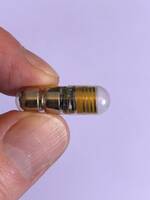Alzheimer's - Dementia, Author Interviews / 02.05.2024
Novel Neuron Model Recapitulates Human 4R Tauopathy: Sheds Light on Potential Therapeutic Target
MedicalResearch.com Interview with:
Dr. Li Gan PhD
Burton P. and Judith B. Resnick Distinguished Professor in Neurodegenerative Diseases
Brain and Mind Research Institute
Weill Cornell Medical College
Shiaoching Gong PhD
Helen and Robert Appel Alzheimer’s Disease Institute
Feil Family Brain and Mind Research Institute
Weill Cornell Medicine, New York, NY
MedicalResearch.com: What is the background for this study? Would you describe the process of making these neurons?
Response: Primary tauopathies are a group of progressive neurodegenerative diseases characterized by the pathological aggregation of 3R or 4R tau protein in neurons and/or glial cells, where 4R tauopathies are more common primary tauopathies. The exact pathological mechanisms remain elusive. There are currently no therapies available that can halt or reverse the spread of tau aggregates since the drug effects found in animal models are not always reproduced in human clinical trials. The development of tau therapies from human cells have become urgently needed. Induced human pluripotent stem cells (iPSCs) offer a unique model to better understand pathological mechanisms underlying human diseases and to develop human cell-based therapy. However, a major challenge to study 4R tauopathy is iPSC-derived neurons express very low levels of 4R Tau isoforms making it difficult to study 4R tauopathy and the mutations located in 4R Tau.
To address this need, we designed and engineered a robust human iPSC 4R tauopathy model using CRISPR/Cas9 technology. We first introduced specific mutations at the intron-exon 10 junctions and silent mutations within exon 10 to promote exon 10 inclusion, leading the increase of 4R isoforms expression in iPSC-derived neurons. Frontotemporal Dementia (FTD) mutation, P301S located in exon 10 is highly aggregation prone. To generate this human disease 4R tauopathy model, we then introduced this mutation to 4R iPSC to make it a 4RP301S iPSC line.
(more…)




